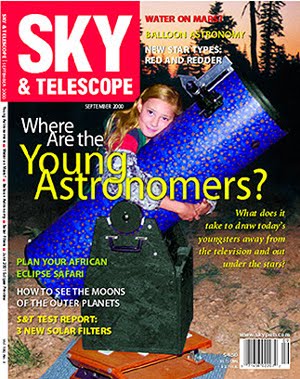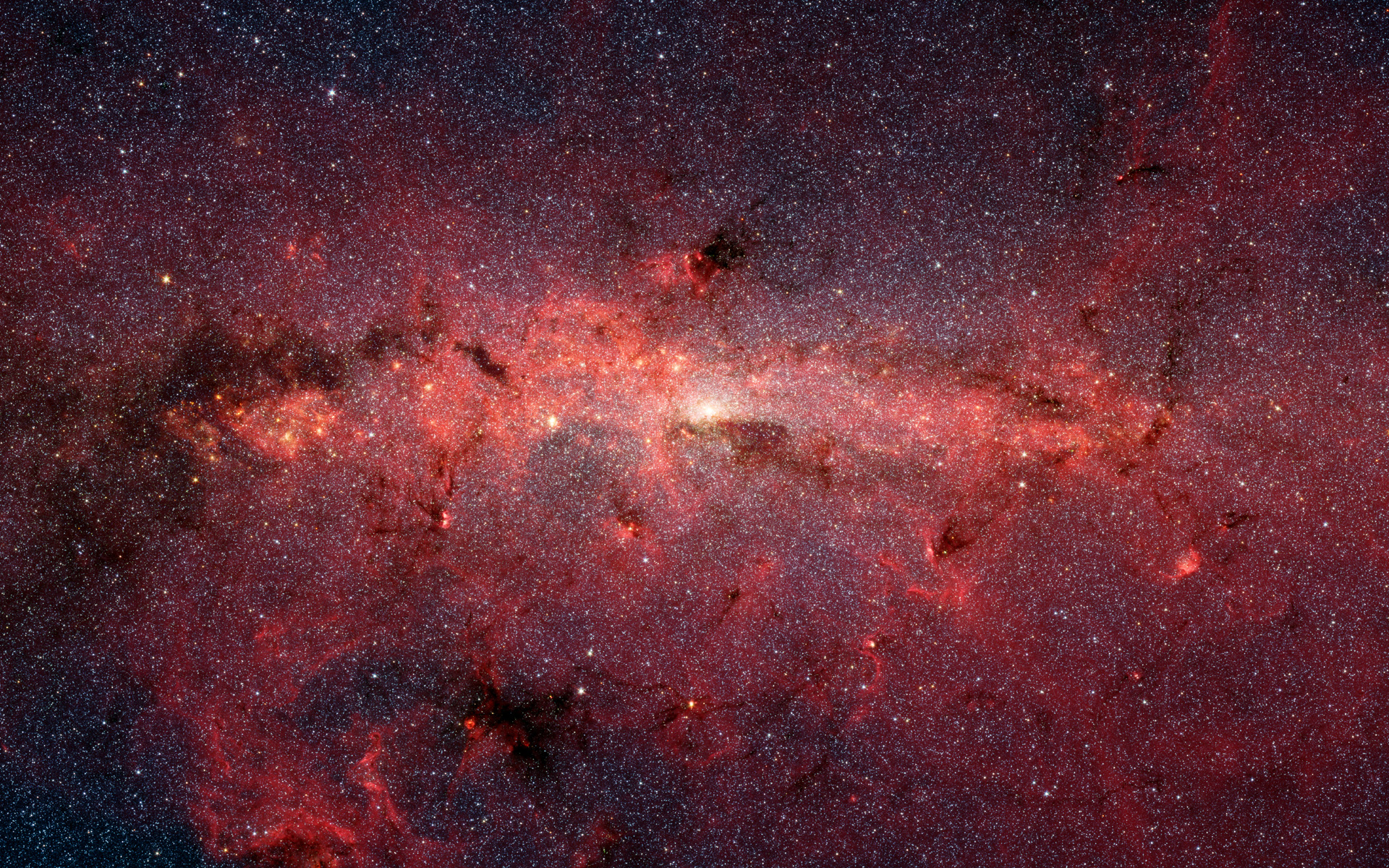I've been working on improvements to La Caja de Los Gatos Observatory in my backyard over the past week. Now that the leaves are all of the trees, the observatory is bathed in the bright yellow-white light of a low pressure sodium cyclops to my north-northwest, sticking its head up at least 30 feet into the air, brightly illuminating everything within a very wide radius. I am thinking hard about trying the laser trick. But instead, I have built a light-blind around the northern and western perimeter of La Caja, three poles with dark brown tarp that seems very effective. The alternative of no observing until spring replenishes the tree branches, is just out of the question.
Last night I set up my 10" f/5.6 Dobsonian just at sunset and took a peek at Saturn. At 74X, the rings were dancing. Looking over to Capella, it was like some Fourth of July sparkler, throwing colors in rapid fire. Not a planetary night. Just after astronomical dark had set in, Mimi stuck her head out the back door and asked where her scope was. Since it is a short school week before vacation, her 10" f/4.5 Dob Cassiopeia found its way out to accompany mine.
I had already been been logging objects in Taurus when Mimi got to her scope. She was decked out in full winter observing gear. I think she finds it great fun to be toasty warm on a winter night in the backyard with a clear sky. I like it too. In fact, I think observing with Mimi has become my favorite type of astronomy session. She asked what I was looking at, and I showed her the Astro Card for NGC 1647. Immediately she asked where her Herschel 400 list was. Hey.... why not... maybe she could bag a few, and its fun to both be using 10" scopes to hunt objects together.
I disappeared briefly to get the book, and upon returning, it was off to the races with Mimi.
Whenever Mimi would find an object, she'd want to get right on to the next one. I had to tell her we should take some time to look at what we'd found, and write down some notes. These are our notes for December 17, 2000.
NGC 1647 - this open cluster in Taurus is easy to find. Using the V of the Hyades as a pointer, we came off the bottom (eastern) extension. The four stars were a great yardstick, taking that distance beyond Aldebaran and slightly west to mag 5.0 97-Tauri. A nice V of stars can be seen in a low power field, and the cluster sits just beyond the vertex of the V. A grouping of three double stars seem to define the central portion of the cluster, arcing gently east to west. The brightest star in the field was about 23' S of the center of the group.
Getting to NGC 1746 began at Iota Tauri, a mag 4.6 star situated almost dead center between the ends of the Hyades' V and Taurus' horn stars Zeta and Beta. Oddly, this star, brighter than 97-Tauri, required more concentration and averted vision. Uranometria 2000 reveals a nice star hop from Zeta northwest to the cluster. This is a loose and large group, extending about 40' across, with a more condensed western portion and several bright stars to the south. Two bright stars sit N/S on the eastern perimeter of the group. What makes this cluster special is the pair of other open clusters obviously embedded line-of-sight within the larger NGC 1746. Both NGC 1758 and 1750 are obvious, looking like a pair of fuzzy eyes along the north side of NGC 1746. The two smaller clusters run N/S within their larger host. With some concentration, the smaller clusters break up (suburban skies) into many stars. This is a very nice sight!
Mimi was already cranking. I couldn't keep up with her. I was using an 11x70 finder with a Telrad, Mimi was dropping on objects with just her Telrad and the now too short for her 10" Coulter. We moved on.
NGC 1807 and 1817 sit just inside the constellation boundary line for Taurus, across from 3 naked eye stars in northern Orion. The stars are mag 5.8 SAO 94377, mag 4.8 15 Orionis and mag 4.6 11 Orionis which is also the top of the hunter's shield. These stars made it a snap for Mimi to land right on the two clusters. I worked for about 5 minutes to locate and confirm them. Of the two, NGC 1807 is smaller and contains 3 bright stars and many dimmer components. NGC 1817 is large, and has a noticeable "T" shape where several double stars define the leg of the T, running E/W. It has several bright stars and appears about 30' away from the other cluster.
With that pair of clusters, Mimi finished the Taurus objects for her H400.
Off to Auriga. Looking at Capella and the three stars nearby, Mimi recalled the myth of the Charioteer and the baby goats... The Kids. We would ride the kids over to NGC 1664, a short jump eastward from Epsilon Aurigae. This cluster was a challenge compared our earlier quarry. A bright star sits very close just SE of a chain extending S of a central concentration of stars defining the core of the cluster. Another chain eminates from the core, sweeping to the east. All in all, this is a pretty cluster... a nice swirl of stars.
Still in Auriga we tracked down NGC 1857, a mag 7 open in the heart of the constellation. A chain of three bright stars ranging from mag 4.7 to 5.5 walked us right to the cluster. Mimi found it first. It is described as dense, but I could only see a handful of dim stars around a central bight component. Maybe darker skies would reveal a nice object, but last night, this one was a dud.
Sitting directly between Iota and Theta Aurigae, you will find M38, a beautiful large and rich open cluster with many stars of similar magnitudes. This was our marker to locate NGC 1907, a small yet dense open cluster in the same wide field view as the famous Messier. This view reminds many people of M35 and NGC 2158 in Gemini, although if memory serves me, 1907 is brighter than 2158, and M35 is brighter (by far) than M38. This view is worth hunting down.
Nearby NGC 1931, roughly opposite and a bit SW of NGC 1907 from M38, looks like a hazy star, perhaps a planetary nebula. It is a cluster with nebulousity, but all I see is the small glow that looks like an out of focus star.
Mimi and I were having a great time, she'd find the objects, I'd confirm them, then we'd try describing the together both of us looking in our eyepieces simultaneously. This is how I used to observe with Alan Nelms years ago. I think it is the best way to observe. Mimi is also learning note-taking in the process. Maybe I'll begin sketching soon.
We moved over to NGC 2126, located conveniently slightly west of the mid-point between Beta and Delta Aurigae. It is a compact cluster with many stars... in my backyard skies it was dim but distinct. A bright star is in the field, virtually involved with the cluster.
Mimi had one more Herschel on the list in Auriga. This one would be a challenge, in the middle of an area with few visible stars. So, off we went to NGC 2281. Using SAO 41380, a mag 4.8 star just NW of the cluster as our marker, we had to find it by making a triangle off mag 1.9 Beta and 2.65 Theta Aurigae. But it got us there. A section of the cluster looks like Delphinus, a small asterism resembling the summer constellation. The cluster is bright with about 20 stars involved. It is quite a nice site.
It was now 9:40 p.m. Mimi had been outside with me for just over two hours. She'd logged 11 Herschels and was quite happy. Not a bad weeknight, in fact, a school night. Long observing hours are one of the joys of winter. So are all the open clusters. Why opens? Because, given a chance, they have form and variety, lots of personality, and can be seen more easily from closer in town than nebulae and galaxies... and are not as sensitive to poor seeing as are planets or the moon. With conditions being so fickle in winter... it is nice to have a class of objects that can be seen just out the backdoor.
Mimi went to bed, and I continued for a few more objects. I noted IC 2149 just off Beta Aurigae and with the 12mm Nagler was able to see a small, bright disk. This object would have taken quite a bit more magnification, but conditions were not favorable for that. Another night.
I stood back and looked at the rising sky. Twinkling through my neighbor's tall oak was Sirius. Orion was sitting up decently, so I looked at a mushy Trapezium and decent contrast between the nebula and surrounding blackness. I hadn't been in Monoceros for some time. I moved down to Orion's back-foot, Saiph, then eastward to mag 4.0 Gamma and mag 4.7 HIP 30867. Situated nearly between these naked eye stars sits NGC 2215. Low in the sky still, it was medium size, dim, and resolved into many dozen stars. A bright star sits in the field to the NW and a bright pair further away to the NE.
During a night of observing, there is invariably some view that stands out. NCG 2301 was to be that one for this session. Use mag 4.1 Delta and 18 Monocerotis to navigate, this unusual open cluster can be seen in a large finder. It was spectacular, with two distinct chains of stars at right angles, the brighter one running N/S, the dimmer more diffuse chain running perpendicular to the E and having a fairly dense core at the intersection. This is a fine cluster!
My last object for the night was NGC 2324, a small cluster that appears to be a miniature Pisces, with the vertex of the angle at the eastern end. A bright pair of stars sits to the N, with the open end of this little Pisces to the NNE. This too is a striking view.
I looked again at the sky and thought about my backyard observatory, realizing it is quite a good place. Soon will come Canis Major and Minor, Puppis, Cancer, Hydra... these areas are wonderful winter hunting grounds, full of objects for a night out in the backyard.












No comments:
Post a Comment